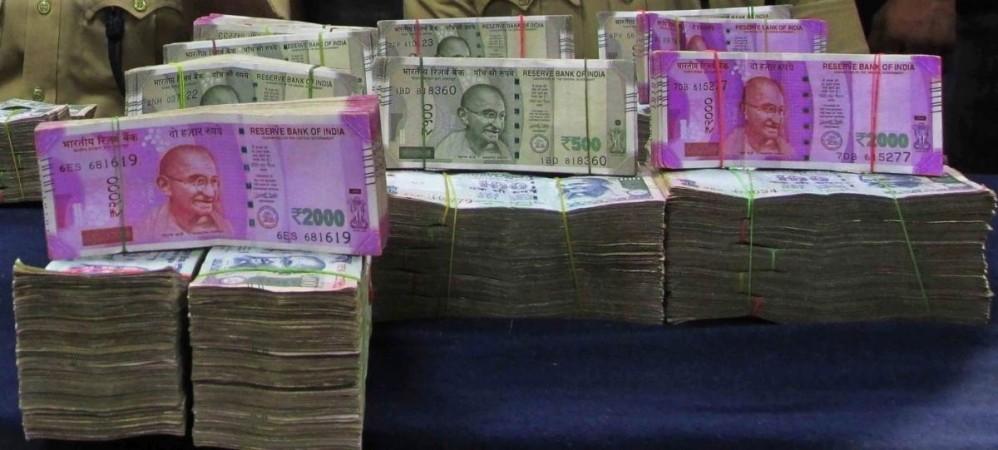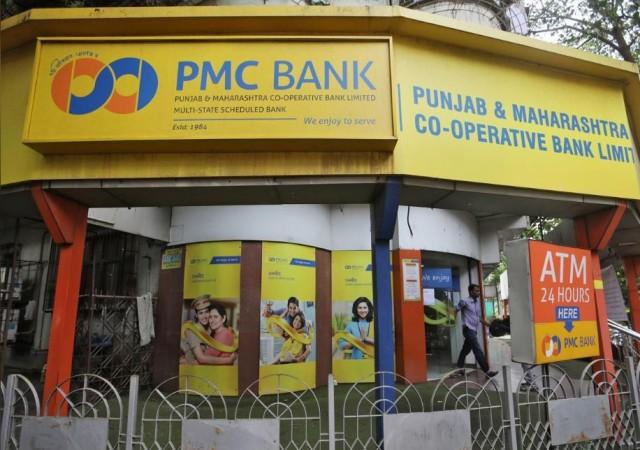When one thing leads to the other and becomes inextricably linked, it gets rather difficult to determine the cause and effect. There are far too many issues circling Indian economy and banking system, but a start has to be made. At the IB Times event, the international book launch of The Banker Who Crushed His Diamonds –The Yes Bank Story by author Furquan Moharkan, the wide ranging issues concerning India's financial system, were unpicked one by one.
Apart from the author, joining in the panel discussion on Strengthening India's Financial Sector were Sanam Arora, Chairperson, NISAU (National Indian Students and Alumni Union) UK, Mohandas Pai, former chairman of the SEBI, Sanjay Jha, politician and author and Kavita Chacko, senior economist, Care ratings.

Why the book?
When the author Furquan Moharkan puts things into perspective, the question as to why did he decide to pen the book The Banker Who Crushed His Diamonds –The Yes Bank Story, becomes rather obvious.
The collapse of Yes Bank led to, "Rs 60,000 crore of wealth being wiped out in a year. There were 60 lakh retail investors who suffered. Let me put this into perspective, if these 1.6 lakh retail investors were to form a geographical unit, they would be 153rd most populous country in the world out of 235 countries."

Because of the magnitude of the wealth and the number of people affected, this was a topic, he feels, waiting to be addressed. "Well this was a topic very close to my heart. I remember covering this story, two years before this thing happened. The March 5 collapse of the Yes Bank and the subsequent bailout. Things were clear since at least a year that the money is not coming and all this while there was dilly-dallying by the management as well as the regulators on this front."
Moharkan says, "Collapse of such magnitude needs to be chronicled. We need common people like us to increase the literacy, we have to put the book in the simplest form possible so that the common man understands it."
What happened to those investors?
In all of this, it's the poor depositor, the investor that often comes to mind. Those who trusted the bank and also those behind its collapse. Moharkan shakes his head before stating bluntly, "They are sitting on the real loss in the range of 75 to 98 per cent of their holdings."
But then who is to be blamed? What to say to those who had 60 per cent of their portfolio parked with Yes Bank. He points out that unfortunately, it's not a one off occurrence, it's a systemic issue.
"We saw five financial institutions failing in less than three years. Yes Bank, PMC Bank, ILFS, DHFL, Laxmi Vilas Bank. And these are five major ones."

Systemic issue, structural failures
There are many challenges facing us in India from the point of view of the stability of the banking system. Mohandas Pai, former chairman of SEBI put it subtly. "Indian banking system has deep structural issues due to public holding. Public sector dominates, now in the decade of 2004 to 2010 there was a large investment boom, economy is doing well, investment to GDP ratio is very high. At other point of time, banking system was captured by cronies and political leaders. Something called phone banking and all that lending for the creation of assets. All this led to a crisis in current decade 2010 to 2020. By the time we had reached 2011, writing was on the wall."
Only we didn't see it.
Poor corporate governance, risk prone lending
As the poster example of poor corporate governance and risk prone lending, he holds out the example of Bhushan Steel. The financial sector being well aware of their dubious restructuring. "They got Rs 80,000 crore. Nobody asked them where are the Rs. 40,000 crore equity you must get in to start steel plants."
Large lending to people who had no previous capacity to set up huge plants, bad management trying to fish in troubled waters, all of these are some of the major structural challenges. He points out how former RBI governor Raghuram Rajan, exposed Rs 15 lakh crore of NPA. Because of the crisis, the banks couldn't lend and the economy couldn't grow.
What has to stop? What has to kick-start?
To begin with the public sector share should come down, the private sector share should go up, there should be better risk management. Whether too cautious or too careless, the system is suffering from the inability to understand the risk. Sanjay Jha points out the sorry and ironic state of affairs. "Banks are supposed to inspire trust, if they themselves fail there is a serious credibility challenge."
Chances are any one name or brand is more likely the proverbial tip of the iceberg. With the malaise set deep into the system. "Banks couldn't recover the corporates with bleeding balance sheet. Even Modi government underestimated the damage of the NPAs to the banking system."
The role of the RBI
Coming back to the Yes Banks, there are many big accounts that swallowed the Yes Bank money. But we need to address why did the RBI fail in putting prompt corrective action plans on the erring banks? The regulatory oversight has to stop.
Sanjay Jha points out a few broad guidelines, "Good regulations, transparency, making disclosures mandatory -- all these have to be incorporated and we need to revolutionise banking system. Then the rule, that RBI can review the private banks and cannot review the public sector banks. This is an anomaly."
We need to know how to regulate. Somewhere a start has to be made.

















